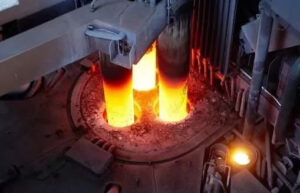Pencils and Diamonds – Everything About the Amazing Material Graphite
In childhood, almost every one of us has used it in the form of a pencil. Graphite is widely used in making pencils, diamonds, and many other industrial parts with versatility. Back in the 16th century, people made use of this to write their scripts, records, and books.
Because of its amazing and exciting features, graphite has many applications in various industries. In this article, we will explore more about graphite and graphite heating elements in detail.
Graphite: Definition & Structure:
Naturally occupied, modification of carbon, graphite is a natural element with a hexagonal pattern that is a typical form of carbon. Graphite gets its grey color from its opaque to black crystals. Diamond is the most expensive element on Earth, a fine hard natural form of carbon modification with a value of 10 moh on the Mohs hardness scale. While graphite is the softest element of carbon modification with a value of 1-2 moh on the Mohs scale of hardness. These two forms of the same elements vary due to the carbon structural form.
Graphite Electrical Conductivity:
Graphite is electrically conductive, results from its structure. In a graphite crystal, carbon atoms contain four valence electrons (outer electrons). These electrons can bond with neighboring atoms. Only three of the four valence electrons into the bond while the 4th electrons remain free. That’s why graphite is electrically conducted.
Graphite Thermal Conductivity:
If we talk about thermal conductivity, graphite has excellent thermal conductivity. It also contains the properties of high-temperature resistance. It does not have a melting point; it directly goes into a gaseous state from a solid state. The process of converting solid graphite into gas form is call sublimation.
Chemical Resistance:
One of the most chemically resistant materials, graphite is resistant to almost all forms of organic chemistry. The plastic industry, coal refining, coatings, paints, refrigerants, and anti-freezes are included in the list of carbon resistant element graphite. Graphite is almost resistant to inorganic elements like acids, alkalis, and salt solutions.
Occurrence and Production of Graphite:
Graphite is a natural element but it can also be produced synthetically. Natural graphite is mined in China, India, Mexico, Brazil, and Ukraine. China Graphite Mold Suppliers mine natural graphite and create premium quality industrial parts and distribute them to various international and national markets.
To create synthetic graphite, the process is very complex yet it can be modified in various forms as desired.
Natural Graphite or Raw Form of Graphite:
Natural graphite is known as exfoliated graphite and produced from the purified graphite flakes. The manufacturing process of flakes is mixed with oxidizing acid to produce graphite compounds. In the process, high temperature helps in creating expanded graphite which can mechanically be compressed into the shaped products.
Graphite is an excellent electrical conductor while expanded graphite is soft, flexible, and easy to process the contrast.
Synthetic Graphite: Artificial Creation
Synthetic production of graphite is technically possible since the last era of the 19th century. In 1895, the first carbon graphite patent was registered. Electrodes (current-transmitting elements) are being created and became the highly used parts in the industries.
Application Areas of Graphite:
Applications of graphite are applied in glass production, nuclear programs, pencils, to make Custom Graphite Molds and machine parts of the heavy machinery. Graphite is widely used in making molds, grippers, settling plates, downpipes, wipers, and deflection curves. Graphite with high density is used in high-temperature steel-making furnaces and equipment. It is also used as a rotating conductor in motors and generators for current transmission.
Graphite helps in slowing down the neutrons that’s why it is used in the reactor industry. As a moderator, reflector in water reactors, in breeder reactors as a shield, and as fuel element cladding.
- https://www.msgraphitemold.com/dp-graphite-heating-elements.html
-

Amazing Material Graphite-2f039280 - on

